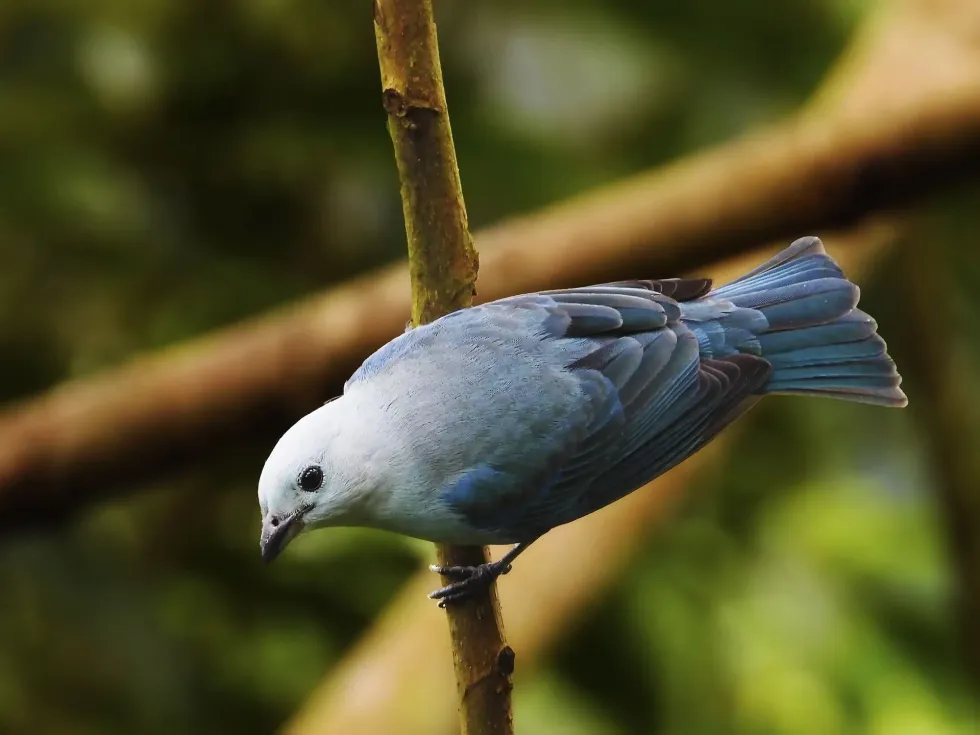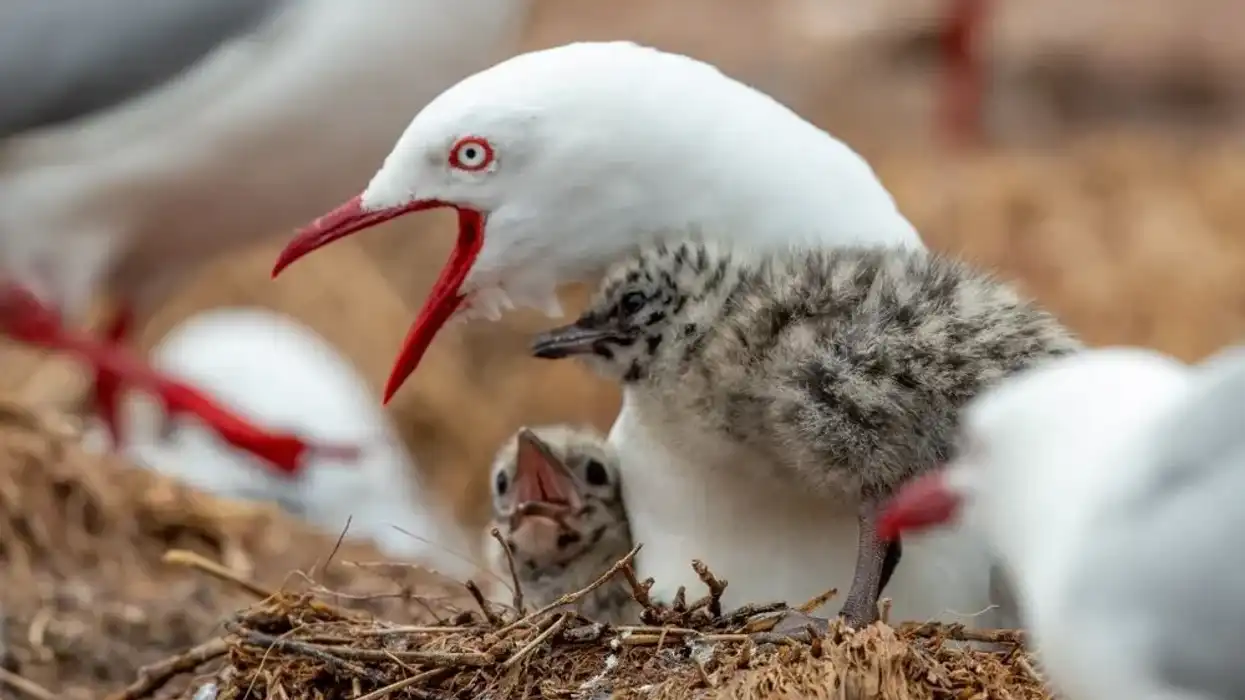Small to medium-sized songbirds assorting in a variety of vibrant colors, shapes, and sizes make up the tanager group of the Thraupidae family. These birds are endemic to South America. The blue-gray tanager (Thraupis episcopus) is one such prominent bird of the Tanager family, Thraupidae. These birds are quite common and widespread along the tropical and subtropical regions.
They are noisy, restless, and confiding species that are usually found in pairs and flocks. The blue-gray tanager Thraupis episcopus is hugely notorious and indigenous to the range of Southern and Central Mexico, Northeastern Bolivia, Northern Brazil and is recently introduced to Lima, Peru.
It is a very social creature that also gets adapted to the presence of humans. The habitat of the bird includes open spaces, agricultural fields, forest edges, and even in towns and cities. Males and females look similar but the young hatchlings are quite dull in coloration.
They are widely spread and are listed as the Least Concern on the IUCN red list of endangered species. If you love reading about the fascinating blue tanager bird, then you must also read about the hepatic tanager and the scarlet tanager.
Blue-Gray Tanager Interesting Facts
What type of animal is a blue-gray tanager?
The blue-gray tanager (Thraupis episcopus) is a kind of bird belonging to the Thraupidae family.
What class of animal does a blue-gray tanager belong to?
The blue-gray tanager (Thraupis episcopus) belongs to the Aves class and orders Passeriformes of the Animalia kingdom.
How many blue-gray tanagers are there in the world?
The blue-gray tanagers have a known population of 5,000,000-50,000,000 worldwide. Blue-gray tanager (Thraupis episcopus) is often referred to as ‘common’ due to its large and widely spread population that exists in pairs and sometimes in flocks.
Where does a blue-gray tanager live?
The blue-gray tanager birds are endemic and occur naturally in semi-opened habitats of South America, the central region of southern Mexico to northeastern Bolivia, and the north of Brazil. It is also found in the Amazon basin. These species of birds have also recently been introduced to Lima, Peru, Florida, and other tropical regions.
What is a blue-gray tanager's habitat?
The habitat of the blue-gray tanager most preferably is the semi-opened areas like agricultural fields, forest edges, rivers, ponds, roads, and urban areas. These birds are also a common sighting in towns, cities, and other semi-open regions, flying in pairs or flocks.
Who do blue-gray tanagers live with?
The gray tanager thraupis episcopus prefer traveling in pairs and/or small groups. While searching for food, they also sometimes join larger flocks of similar species of birds or of different species.
How long does a blue-gray tanager live?
The average lifespan of blue-gray tanager is almost 9- 10 years in the wild.
How do they reproduce?
The blue-gray tanager, Thraupis episcopus, breeds in the months of March to July. Their breeding habitat mainly consists of open woodlands, gardens, and cultivated areas.
Females lay two to three eggs, which are white to grayish green-blue in color and have a dark marking over them, in a nest that is shaped like a cup and made up of leaf strips, roots, dried grass, moss, and other thin material found.
These nests can be situated on a tree fork or in a crevice of buildings. The incubation period for the eggs is for 12-14 days. Both males and females feed the chicks.
The chicks further remain in the nest for a period of about 14-20 days. This period is followed by them developing into fledglings and they learn to fly and start leaving the nest. Moreover, their parents do not stop feeding them even at this age!
What is their conservation status?
The population of the blue-gray tanager birds is widespread and hence their population is abundant. They are listed as Least Concern on the IUCN list of endangered species.
Blue-Gray Tanager Fun Facts
What does a blue-gray tanager look like?
The blue-gray tanager is a small to medium-sized songbird that consists of black and dark eyes with a thick, short, and bluish-gray bill. You can spot them by their throats, head, and underparts that are pale gray in color. This pale gray converts into a bluer hue over the flanks.
Their back is of a darker blue-gray shade whereas the tail and the rump are a vibrant blue in color. The wings are also colored bright sky-blue, which gets darker over the shoulders and the primary coverts. Males and females look similar however, the young hatchlings or chicks appear to be grayish and much overall.
How cute are they?
Just like rufous hummingbird, the blue-gray tanager is an extremely cute species of songbird due to its vibrant blue color ranging from sky blue on the wings to a darker blue over its black.
How do they communicate?
The blue-gray tanager birds are known to be extremely noisy and communicate through songs and high pitched chirps. Their songs exude sounds similar to squeaky twittering with bursts of tseees and tsuupp sounds. The male songs are longer and their pitch is higher as compared to the female sounds.
How big is a blue-gray tanager?
The blue-gray tanager thraupis episcopus bird is 7.1 in (18 cm) in length. It is double the size of hummingbirds.
How fast can a blue-gray tanager fly?
The average speed of the blue-gray tanager birds is around 3o mph (48.2 kph).
How much does a blue-gray tanager weigh?
The weight of a blue-gray tanager bird is 1.2 oz (35 g). It is almost the same size as a bee hummingbird.
What are the male and female names of the species?
The male and female tanager birds are not given distinguishable names.
What would you call a baby blue-gray tanager?
Baby blue-gray tanagers are known as fledgling, hatchlings, or chicks.
What do they eat?
The blue-gray tanager species are omnivorous in nature and feed on soft fruit, bees, insects, and nectar. It dwells around human habitation and hence is even known to eat some cultivated fruit like papayas or tangerines. The blue-gray tanager is also an integral of the dispersal of seeds for a lot of tropical plants due to its feeding preferences.
Are they dangerous?
No, the blue-gray tanager birds are of no threat to humans and hence are not dangerous.
Would they make a good pet?
The environmental conditions of these species of birds require them to sustain in open spaces hence confining them in a cage would just be an evil thing to do. These birds also relish eating insects which would be a difficult task to provide at all times.
Did you know...
Blue-gray tanager species are called so due to their two-toned coloration range of gray and blue diversified over their upper body and their underparts. The blue-gray tanager thraupis episcopus is pale gray in color on its head and underparts. Whereas, the bird shows a dark variation of darker blue color over its back.
The blue-gray tanager thraupis episcopus has been given the nickname of 'blue jean' contributing to the display of their coloration in tropical areas like Trinidad and Tobago. In the Caribbean islands, they are also captivated and bred and then sold for the purpose of bird singing competitions which are held by the locals in places like these.
Is a blue and gray tanager an omnivore?
Yes, the blue-gray tanager is an omnivore and feeds on flower nectar, soft fruits, and insects.
How many eggs does a blue-gray tanager lay?
The blue-gray tanager birds lay around three to five eggs.
Here at Kidadl, we have carefully created lots of interesting family-friendly animal facts for everyone to discover! For more relatable content, check out these red-headed woodpecker facts and yellow-billed cuckoo facts for kids.
You can even occupy yourself at home by coloring in one of our free printable Exotic Bird coloring pages.









